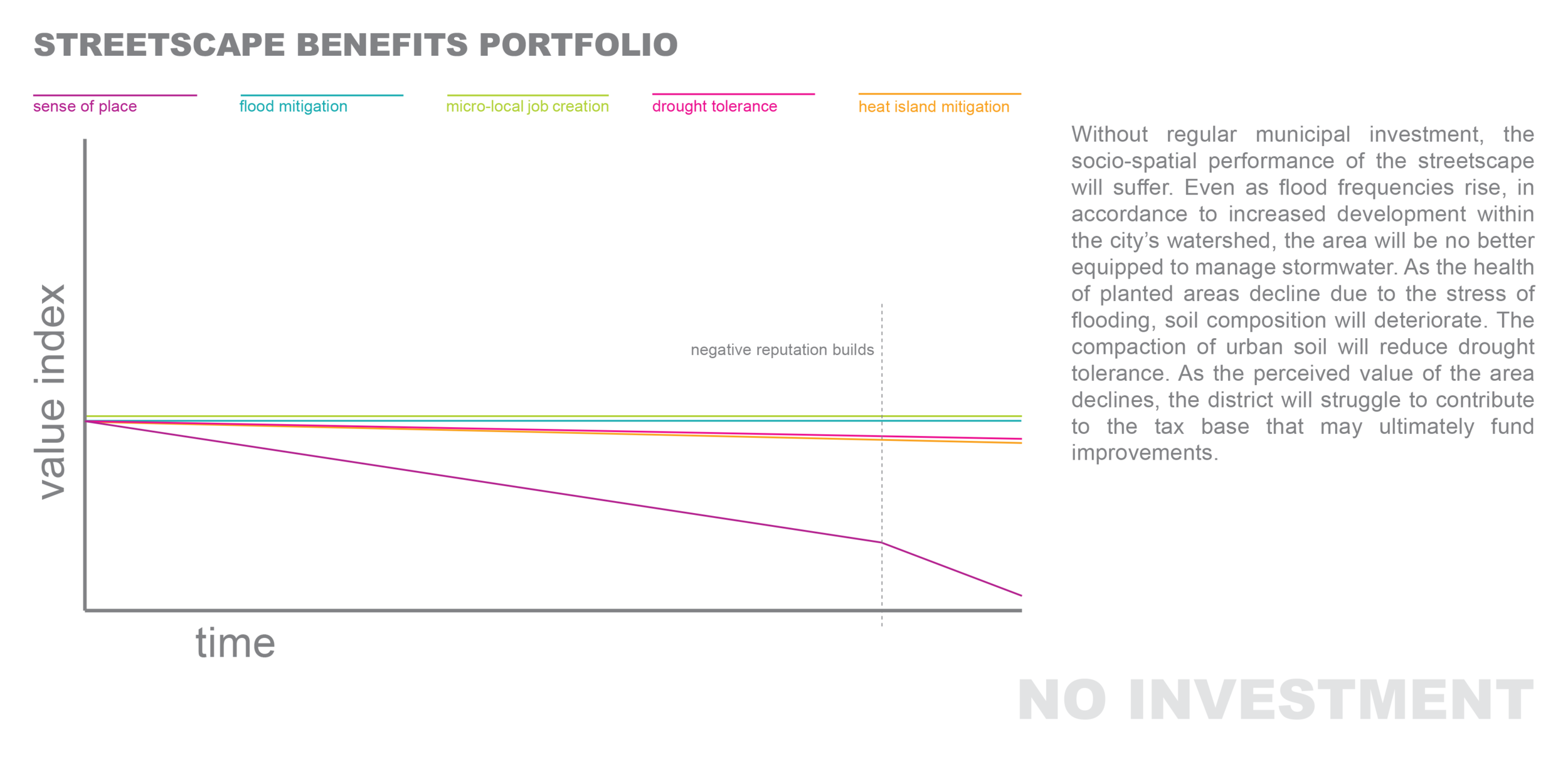
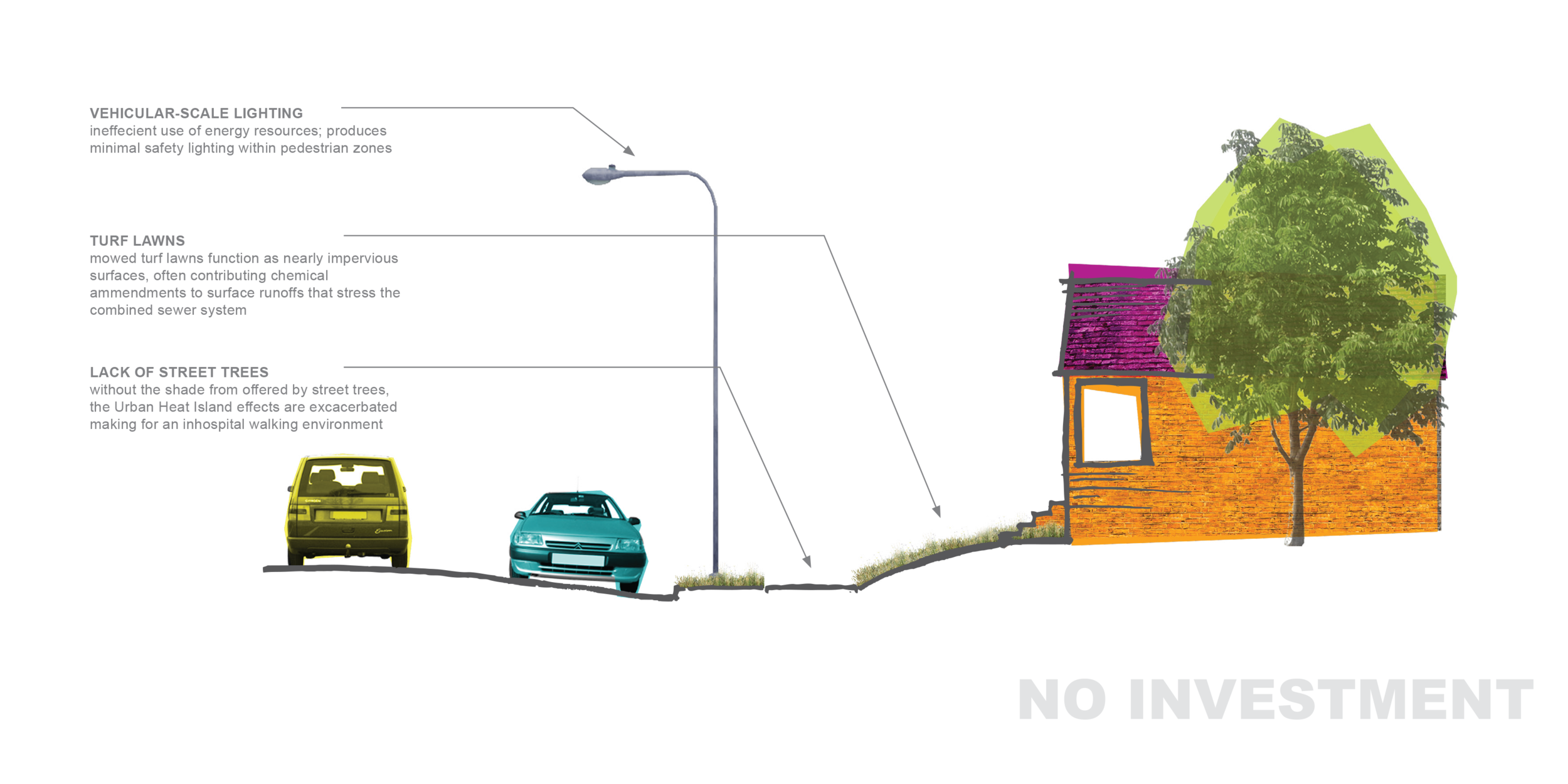

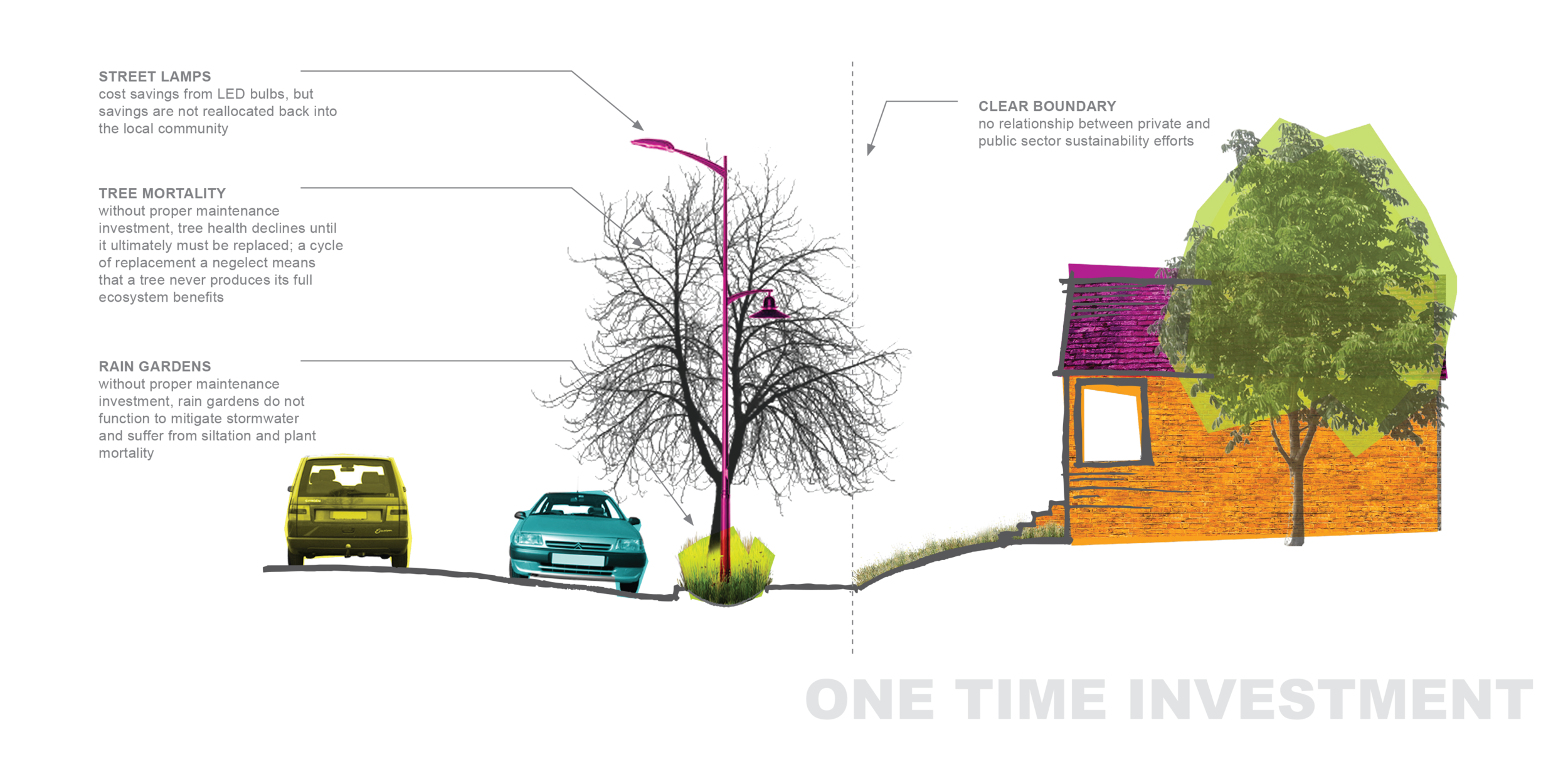
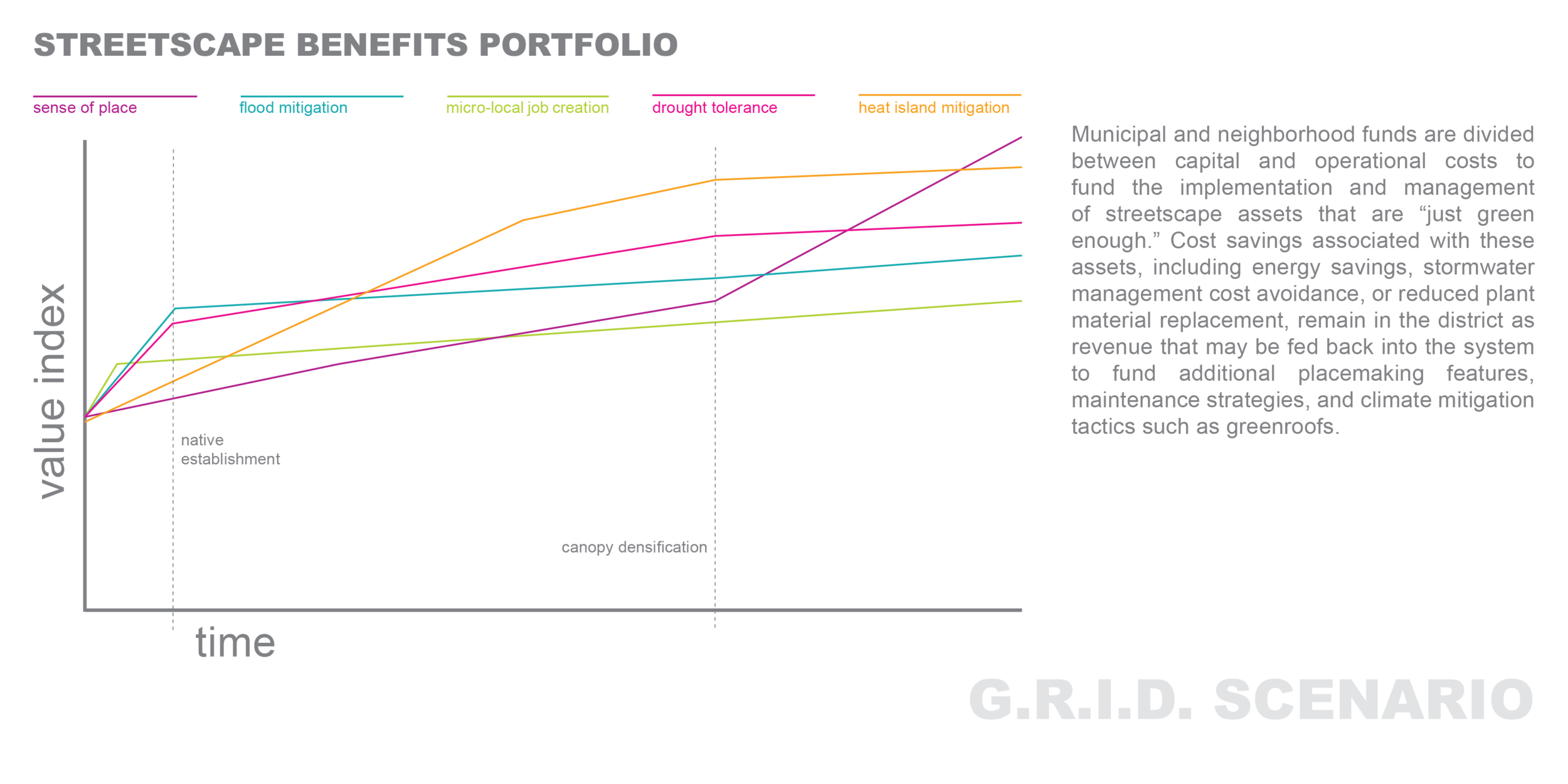
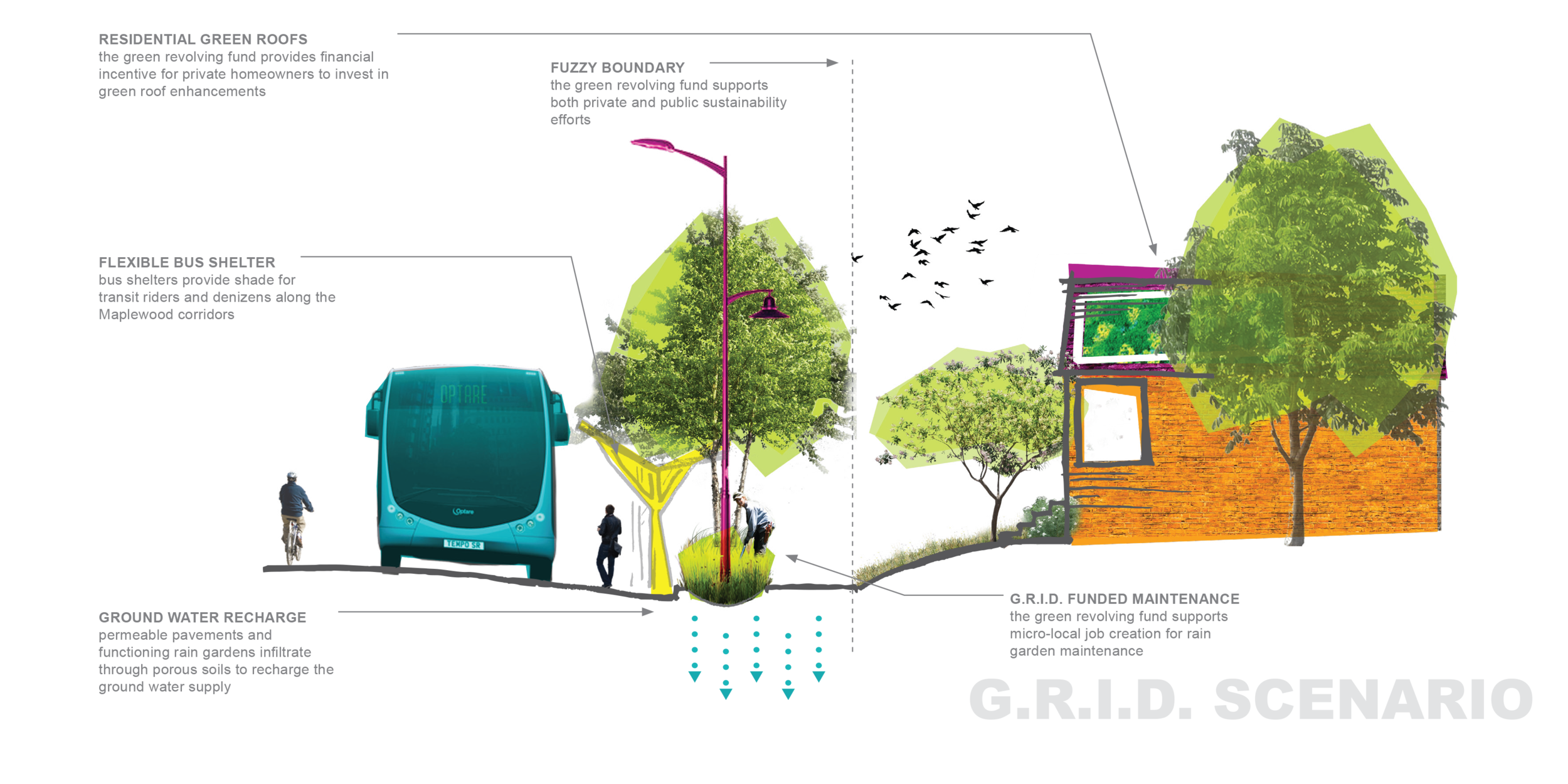
Living “off the grid” is, for an individual, one of the most highly admired, sustainable actions. Such a lifestyle entails taking complete responsibility not only for one’s environmental footprint but also for one’s social and economic needs. The phrase brings to mind a quiet cabin in the woods, without internet, without, even, Amazon.com. But within an urban environment, at the scale of a neighborhood, living “on G.R.I.D.” is just as admirable, if not more so. Equally responsible for building a sustainable future, this approach strengthens the social fabric of the immediate area while positively contributing to the region as a whole. Instead of isolation: connection. Instead of a cabin in the woods: a multi-family residence on an arterial road.
A Green Revolving Investment District (G.R.I.D.) is a vehicle for change that empowers an area to treat sustainable improvements as micro-local revenue generating opportunities. The funds that result from energy cost savings, potable water use savings, and other efficiencies related to updated green infrastructure remain in the district and are used to fund the ongoing care of existing assets and the design and implementation of future built improvements and programs. Within the existing economic model, improvements are at least partially funded from a central source such as a city. Any cost savings resulting from local or neighborhood scale features are absorbed back into a large municipal budget. By the time that the services supported by that budget are distributed back into the neighborhood, the returns from local improvements are negligible. This means that neighborhood residents do not feel the positive benefits of the landscape assets such as regenerative ecosystem services and community connection. Instead, community members are burdened with the results of infrequent maintenance and plant mortality.
The “one time investment” approach results in a rather unsustainable sustainability effort while leaving local residents questioning how landscape assets improve their quality of life when they are left with unmaintained amenities and the fear of geographic displacement due to potential gentrification. Conversely, the “on G.R.I.D.” approach offers a fresh way to provide the benefits of green infrastructure amenities while including local residents in the process.
On G.R.I.D is a micro-community investment initiative that provides a vessel for the value of the cost savings from green infrastructure improvements such as LED lighting and reduced water usage. The deposits made into this community account capture the monetary benefits of local investments and are then reallocated to local residents for maintenance care work. Ultimately, the G.R.I.D. account is situated to then pay it forward to other areas in the region, resulting in a helical increase in public engagement, resident retention, and climate benefits. “On G.R.I.D.” explores the social, environmental, and economic benefits associated with the treatment of the 0.68 km stretch of Manchester Avenue that links Southwest Avenue to McCausland Avenue, as a Green Revolving Investment District. The vision for this small pocket of the St. Louis community is a prototype worth testing based on the approachable nature of the proposal.
Type: Competition
Co-Designer: Nicole Rebeck
Competition: Design for Life: Retrofitting Green Infrastructure Solutions for Neighborhoods (shortlisted)
Hosts: Landscape Institute, National Housing Federation, Groundwork London
September 2015